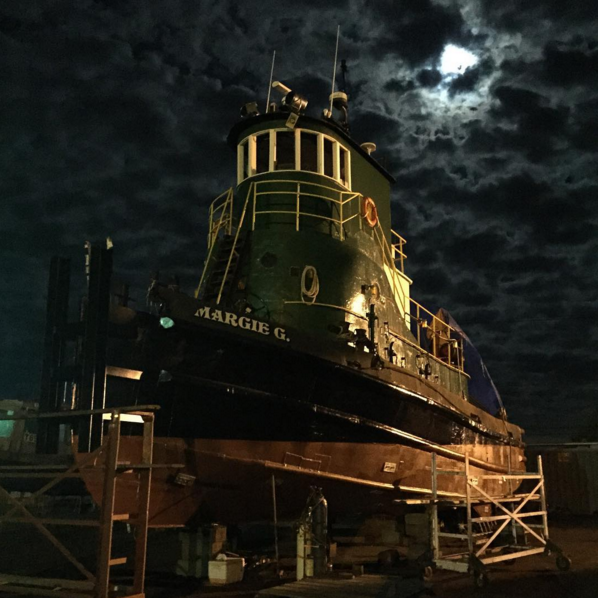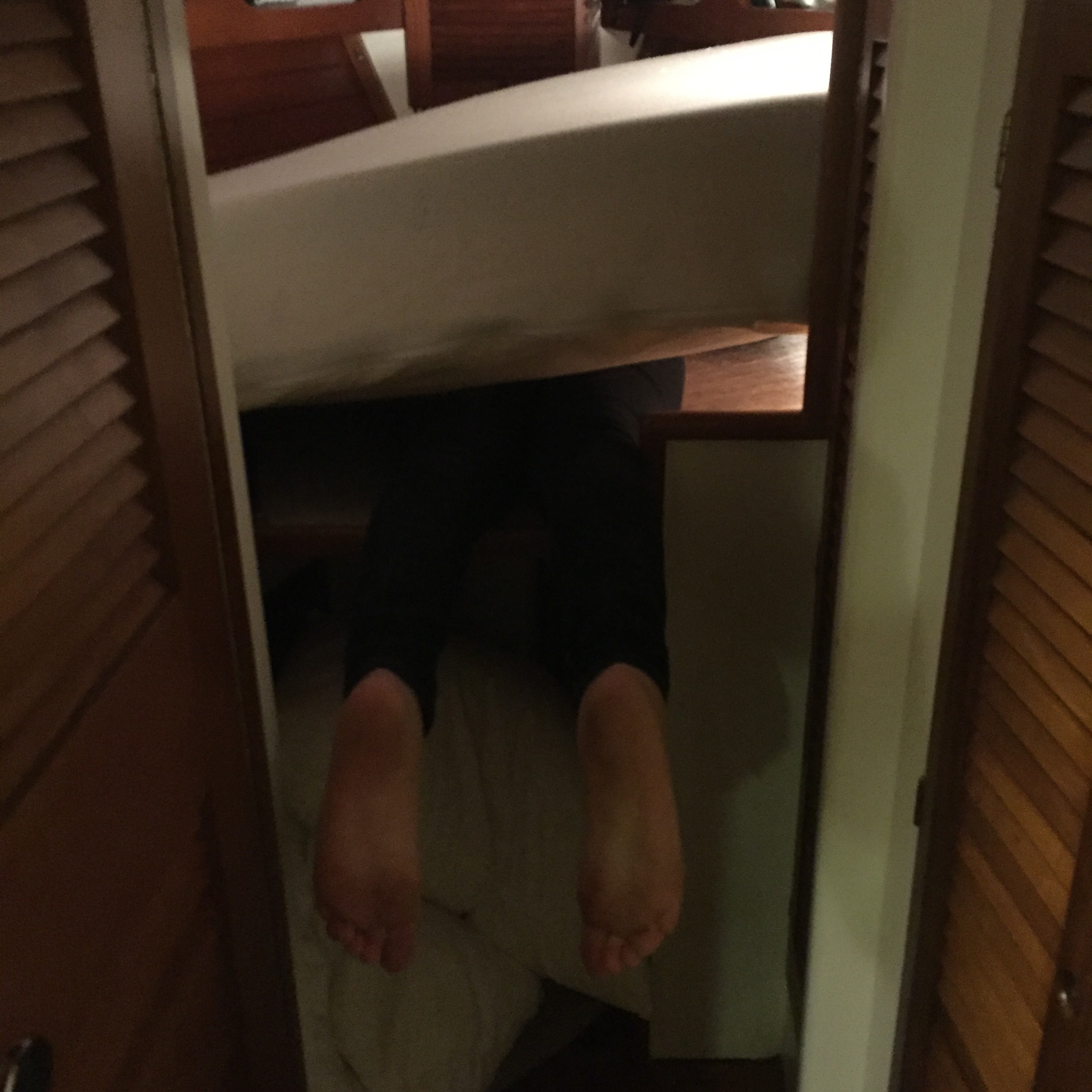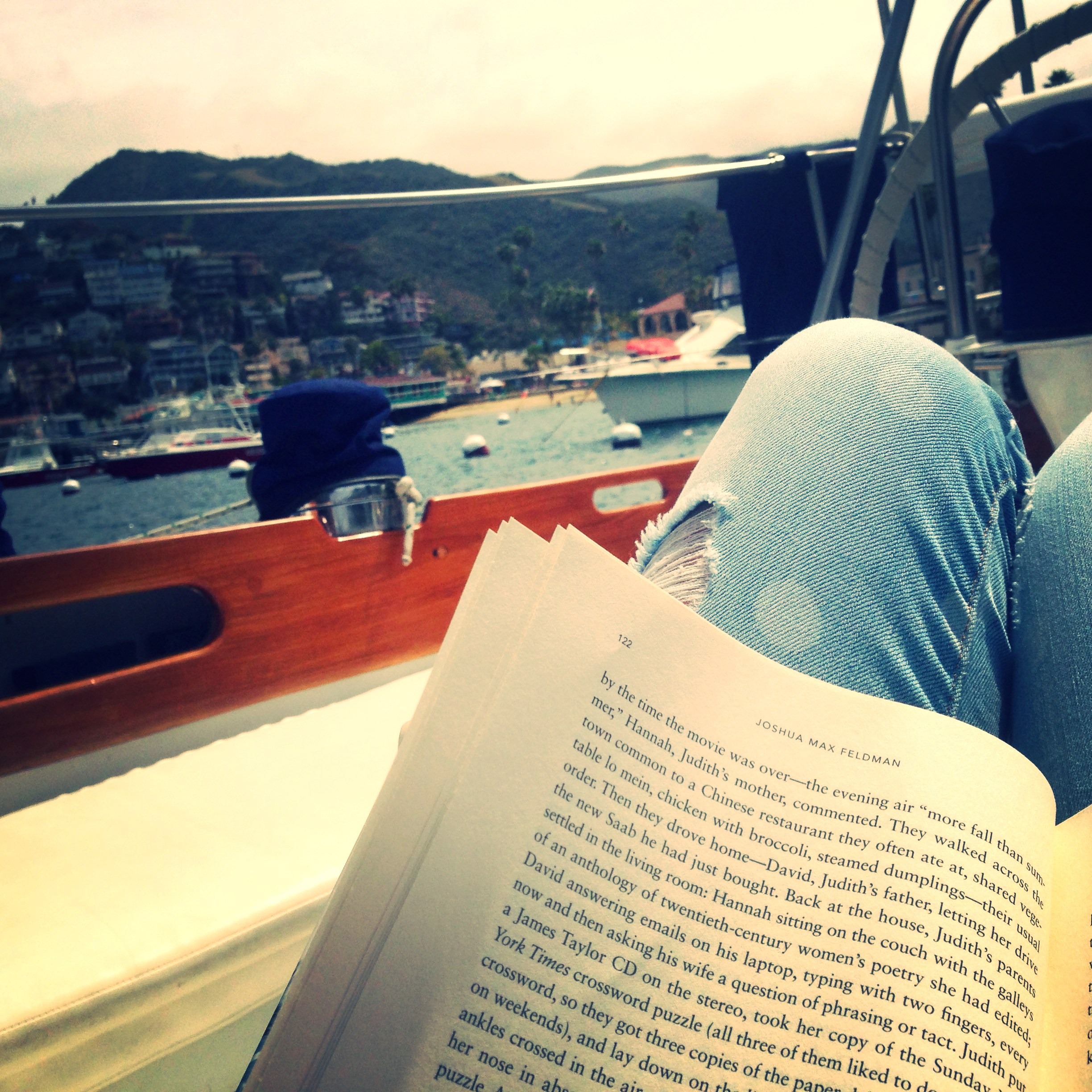When we first started looking at buying a boat, all boats looked the same to me. Some were prettier than others, but that's all I saw, and I got bored quickly.
But a funny thing happens once you buy a boat: all you want to do is stare at others.
During our early evenings of walking the docks and taking dinghy spins around crowded harbors, it was enough to ooh and ahh at neighbor's pretty boats and gleaming paint jobs. That's still fun!
The longer I cruise, the more my boat eyes see. One of the most interesting things about observing boats is seeing what people have decided is important to them, like power, space, and adventure gear. We’re constantly boat-gazing to get new ideas for how to improve Scallywag.
While every boater is different, you can tell a lot about a person from their boat. A little visual detective work will allow you to “read” someone’s boat to understand what commonalities you might have or where to start a conversation, or to read a harbor to understand what you're about to get into (mega money? A boat graveyard?). With practice, it’s easy to take an educated guess at your neighbor’s cruising agenda.
For others who stare at a boat and max out their observations at, "that's a boat!", it's fun to reflect on some of the easy clues boats can give off about the style and intentions of their owners.
A full-time cruising boat, typically a sailboat or a trawler, because they’re more fuel-efficient, is equipped for distance and power. They may have yellow, red and blue jerry cans, a wind generator or solar panels.
Solar panels, wind generator, kayaks and the telltale brown smudge of an ICW moustache. You can tell we've been around!
At anchor, they’re often draped with laundry and while they can look messy, most of the things on deck can be stowed easily since they’re always on the move. That’s not to say cruisers are slobs — Many cruising boats look impeccable (especially the ones that go back to the Northeast in the summer and get a break from the intense Caribbean sun). Some will have peeling or completely wrecked paint or varnish. Longterm cruisers (including us!) often save the time and money that could be spent fixing aesthetics to cruise longer and more happily.
Liveaboard boats may also be in great or poor external condition. Because they aren’t going anywhere, they may have more on deck that isn’t secured. Bikes, DIY shade canopies, extensive gardens or additional plywood construction are all indicators that these boats haven’t made a passage recently.
If a boat cruising boat looks perfect, it’s usually because the owner is a bit older and has had time to save up more, or the boat is in its first couple of seasons of cruising. Sailors who do 6 months on, 6 months off also have fairly immaculate boats, because they have a bit more time for improvements or repairs.
Top left corner: Solar panels, antenna booster, wifi booster, sirius weather booster... check.
A boat with lots of power-collecting equipment and antennas will usually indicate the owners are still working. Our own boat has never been better equipped or looked more worn on the outside. As younger cruisers, we’re not alone. If you see a boat that may be worse for wear but has new solar panels and the green glow of a wifi or antenna booster, you can make an educated guess that the person who owns it is still be working while sailing and making very strategic investments in what to improve.
A mint-condition boat without anything secured to the stanchions, looking sleek and clean and just as the boatbuilder intended, is likely used locally or for weekends and holiday trips. Some people run their engines or generators regularly to create power, but most full-time cruisers have invested in some kind of wonky-looking equipment to keep their battery banks full.
Trawlers, or the comfy condos of the boating world, are typically operated by coastal cruisers doing the Great Loop, heading from Maine on down through the ICW, or cruising in nearby international islands. Trawler owners are smart — the boats are spacious and relatively conservative on fuel. Owners are also typically older, with the bigger boat being a compromise of adventure and comfort.
Charter boats usually have more than two people on them, and in the Bahamas at least, they’re usually catamarans. These boats are typically without much signage and tend to look fairly generic, save the labeling of the charter company on the sail cover or on a flag in the rigging. In my unscientific observations, if you see a Lagoon (a distinctively large brand of catamaran) there’s a 90% chance that it’s a charter, or has been in charter.
When the sunset rolls around, we all share the same ocean.
Large fishing boats, speedboats or mega yachts rarely have cruisers on them full-time, unless they’re crew. You can often pick out a mega yacht crew by spotting groups of people walking the docks together. Six or more people, often in the same color shirt or similar clothing, is an obvious indicator that they’re crew of a big ship nearby. If you see people walking the docks who are wearing resort-wear (flowy fabrics, white linen pants) or don’t make eye contact or say hello, they’re likely passengers on a larger yacht.
What do you look for when you boat gaze? Is there anything I missed that you're always on the lookout for?





























